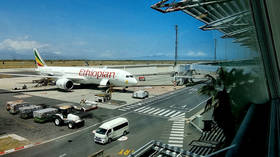Civil aviation 40 times safer than in 1960s – study

Air travel has become significantly safer since the early days of large-scale commercial flights, according to the latest research by the Massachusetts Institute of Technology (MIT).
In a study published in the Journal of Air Transport Management, the authors analyzed the risk of death in commercial air travel per passenger boarding, and found that flights are now around 39 times safer than they were during the dawn of mass air travel in the late 1960s.
For instance, while the risk of fatality in commercial air travel was one per every 350,000 passenger boardings globally in 1968-1977, in the 2018-2022 period it was one per 13.7 million boardings.
“Aviation safety continues to get better,” MIT professor Arnold Barnett, a leading expert in air travel safety who co-authored the study, stated.
“You might think there is some irreducible risk level we can’t get below. And yet, the chance of dying during an air journey keeps dropping by about 7% annually, and continues to go down by a factor of two every decade,” he added.
Researchers compared the aviation safety trend to “an aerial version of Moore’s Law,” a prediction by Intel co-founder Gordon Moore that the computing power of chips would double roughly every 18 months. With that in mind, they estimated that civil aviation has become roughly twice as safe in each decade since the late 1960s.
The study did not delve into the reasons behind the trend, but, according to Barnett, there are several factors that contribute to the improvement of aviation safety. Among them are technological advances such as collision avoidance systems in aircraft, improvements in plane crew training, and the work of aviation watchdogs and safety boards.
Researchers warned that despite the overall improvements in air travel safety, some parts of the globe remain more dangerous for commercial flights than others. For instance, the US, most of Europe, Australia, Canada, China, Israel, Japan, and New Zealand were found to have 36.5 times fewer fatalities per passenger boarding in 2018-2022 than most countries of the Middle East, South America, and South Africa, as well as South Korea, Taiwan, Thailand, and Türkiye.
The researchers used data from the Flight Safety Foundation, the World Bank, and the International Air Transport Association for their calculations.













